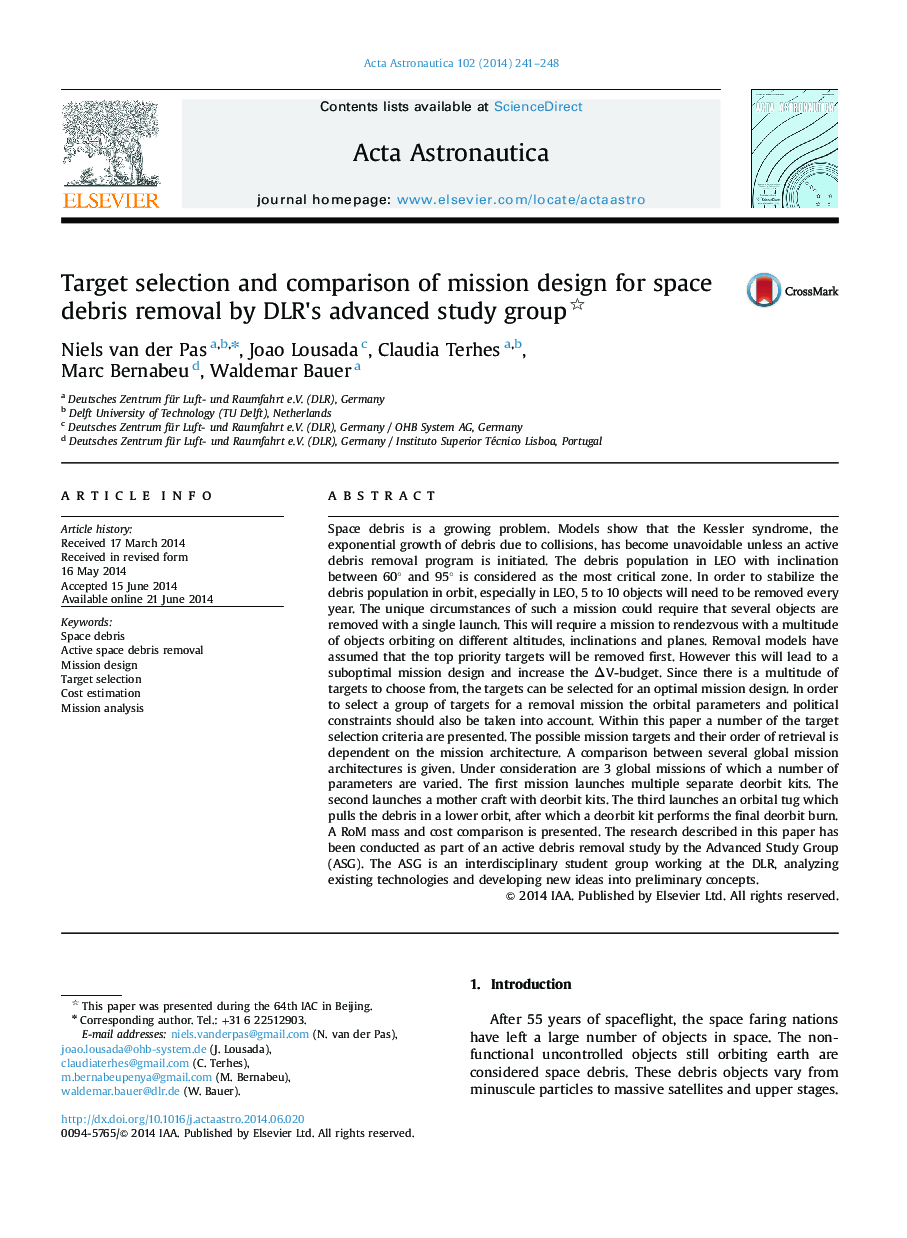| کد مقاله | کد نشریه | سال انتشار | مقاله انگلیسی | نسخه تمام متن |
|---|---|---|---|---|
| 1714603 | 1519950 | 2014 | 8 صفحه PDF | دانلود رایگان |
عنوان انگلیسی مقاله ISI
Target selection and comparison of mission design for space debris removal by DLR׳s advanced study group
دانلود مقاله + سفارش ترجمه
دانلود مقاله ISI انگلیسی
رایگان برای ایرانیان
کلمات کلیدی
موضوعات مرتبط
مهندسی و علوم پایه
سایر رشته های مهندسی
مهندسی هوافضا
پیش نمایش صفحه اول مقاله

چکیده انگلیسی
Space debris is a growing problem. Models show that the Kessler syndrome, the exponential growth of debris due to collisions, has become unavoidable unless an active debris removal program is initiated. The debris population in LEO with inclination between 60° and 95° is considered as the most critical zone. In order to stabilize the debris population in orbit, especially in LEO, 5 to 10 objects will need to be removed every year. The unique circumstances of such a mission could require that several objects are removed with a single launch. This will require a mission to rendezvous with a multitude of objects orbiting on different altitudes, inclinations and planes. Removal models have assumed that the top priority targets will be removed first. However this will lead to a suboptimal mission design and increase the ÎV-budget. Since there is a multitude of targets to choose from, the targets can be selected for an optimal mission design. In order to select a group of targets for a removal mission the orbital parameters and political constraints should also be taken into account. Within this paper a number of the target selection criteria are presented. The possible mission targets and their order of retrieval is dependent on the mission architecture. A comparison between several global mission architectures is given. Under consideration are 3 global missions of which a number of parameters are varied. The first mission launches multiple separate deorbit kits. The second launches a mother craft with deorbit kits. The third launches an orbital tug which pulls the debris in a lower orbit, after which a deorbit kit performs the final deorbit burn. A RoM mass and cost comparison is presented. The research described in this paper has been conducted as part of an active debris removal study by the Advanced Study Group (ASG). The ASG is an interdisciplinary student group working at the DLR, analyzing existing technologies and developing new ideas into preliminary concepts.
ناشر
Database: Elsevier - ScienceDirect (ساینس دایرکت)
Journal: Acta Astronautica - Volume 102, SeptemberâOctober 2014, Pages 241-248
Journal: Acta Astronautica - Volume 102, SeptemberâOctober 2014, Pages 241-248
نویسندگان
Niels van der Pas, Joao Lousada, Claudia Terhes, Marc Bernabeu, Waldemar Bauer,